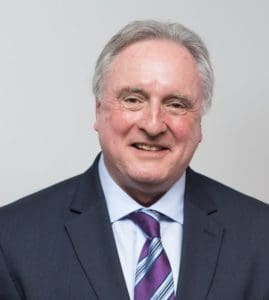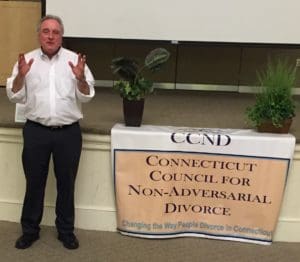Transforming Conflict Through Dialogue: MBBI Member Spotlight Bob Stains
Bob Stains is a trained therapist, and mediator, and has over 27 years of experience in consulting, training, facilitation, and dialogue. With an extensive background in facilitative dialogue and conflict resolution, he is also the founder of Bob Stains and Associates, Conflict Transformation.
Bob began his career focused on therapy. After receiving a Bachelors in Psychology from Nyack College and a Masters in Community Mental Health Counseling from Northeastern University, he first used his therapeutic skills on the streets with individuals suffering from mental health issues, addressing urgent concerns and getting them further help if needed. Bob was also a part of creating the first early intervention and prevention, multidisciplinary psychiatric outreach team in the country, where he would go to communities and educate “natural helpers”. These natural helpers, such as bartenders or store clerks, would be the first line of intervention and aid with individuals who may be experiencing life crises or mental illness. “It prepared me to be adaptable and always look for what the situation, the client, and the context surrounding the client required”, Bob says. He rounded his psychotherapy career out with a private practice working with families.
A Collaborative Approach to Therapy
 After 6 years of practicing therapy on the streets, Bob became involved in the coaching and directing phase of his career. He became a training director for Danvers State Hospital in Massachusetts, and later on the National Director of Training and Technical Assistance at The Better Homes Foundation, a homelessness foundation. This was during the “era when large health institutions were being de-institutionalized and clinicians were being trained to help people make that transition”, Bob explains. As community health centers grew, Bob was creating programs for family shelters, training staff in “whatever works”, practical skills that could be applied out in the world to help people at the margins function as fully as possible.
After 6 years of practicing therapy on the streets, Bob became involved in the coaching and directing phase of his career. He became a training director for Danvers State Hospital in Massachusetts, and later on the National Director of Training and Technical Assistance at The Better Homes Foundation, a homelessness foundation. This was during the “era when large health institutions were being de-institutionalized and clinicians were being trained to help people make that transition”, Bob explains. As community health centers grew, Bob was creating programs for family shelters, training staff in “whatever works”, practical skills that could be applied out in the world to help people at the margins function as fully as possible.
A prime example of using “whatever works” was a story that Bob recalled while performing his outreach work with a young man with alcoholism who was very sick. His mother explained that he had refused treatment and allowed Bob to enter the room to see him. “I went up to him and just sat down next to his bed and listened to him”, he remembers. The following day the mother told Bob that he had entered a recovery program. “She said that she had many therapists come but that I was the only one who sat down. Everyone else kept standing. I hadn’t planned it, but I sure learned from it!”. This was a vital lesson in taking a collaborative approach to therapy, which allows for mutual trust and respect, versus a top-down stance that positions a helper as a removed ‘expert’.
Transformative Mediation
Though initially trained in a directive approach to mediation, Bob was attracted to the Transformative model of Baruch Bush and Joe Folger, especially their ideas about creating contexts that enhance “empowerment” and “recognition”. He was trained by them and for many years served as one of the original Transformative Mediation mediators and mediator trainers for the US Postal Service’s REDRESS mediation program. He continues to incorporate opportunities for empowerment and recognition at all levels of his work in dialogue, mediation, and facilitation.
Genuineness in Dialogue
Working in community health centers and homelessness foundations across the U.S. there were gender, race, and social class barriers that had to be addressed in order to create the levels of trust and respect that enabled constructive conversation to happen. Bob continued to engage and bridge gaps through his work not only nationally, but internationally as he trained practitioners in Reflective, Structured Dialogue (RSD) in the Philippines. Before setting foot in the country, people had given him books on the Filipinos to help him better understand their background and characteristics. Once on-site, his client told him, “throw the books away, we’re hiring you for who you are, just be your genuine, curious self. If you want to understand us better, ask.”. This moment demonstrated to Bob that one of the most important things a practitioner can do is to be real; to be one’s authentic self.
Respecting Identity and Unfreezing Conversations
 Although Bob was trained in transformative mediation in the beginning of his career and used mediation practices in therapy, his approach to helping people shifted dramatically after he encountered the Public Conversations Project (PCP), now known as Essential Partners, an organization that trains stakeholders in resilience, cohesion, understanding, and trust. “Their approach to helping people was so completely different than anything I had ever seen before”, he begins “I had had years of training on diversity and inclusion, but my take at the time was that it always started out by making someone wrong and then trying to re-educate them”. PCP, its approach, and its model of dialogue challenged this view and invited people to be in their own identity, allowing the practitioner and others to understand them as they wanted to be perceived. After Bob took PCP’s first workshop in 1994, “I just fell in love” with the people and the model, he admits.
Although Bob was trained in transformative mediation in the beginning of his career and used mediation practices in therapy, his approach to helping people shifted dramatically after he encountered the Public Conversations Project (PCP), now known as Essential Partners, an organization that trains stakeholders in resilience, cohesion, understanding, and trust. “Their approach to helping people was so completely different than anything I had ever seen before”, he begins “I had had years of training on diversity and inclusion, but my take at the time was that it always started out by making someone wrong and then trying to re-educate them”. PCP, its approach, and its model of dialogue challenged this view and invited people to be in their own identity, allowing the practitioner and others to understand them as they wanted to be perceived. After Bob took PCP’s first workshop in 1994, “I just fell in love” with the people and the model, he admits.
The project focuses on its significant contribution to the field of conflict transformation: RSD. “Dialogue can mean anything, but this approach was made for people with deep passions about identity, values, and worldviews who come into conflict with one another”, Bob explains. It incorporates threads of theories such as communication theory and family systems. The dialogue also relies on collaborating with people to “prepare themselves for a voyage into the new” as PCP founders put it, and to create a structured conversation to surface information to someone who is an ‘other’ that will spark their curiosity and result in the speaker being heard on a deeper level. Through his long experience teaching and training professionals in conflict transformation, Bob regularly uses two pictures to highlight a common pathway to dialogue. First, a picture of fire, which highlights a series of exchanges that may have burned people in a community; second, a picture of ice, where the parties involved respond to the issues by freezing over and refusing to talk. Bob aims at ‘unfreezing’ this dynamic and creating a safe environment through conversation.
MBBI
Bob came to know MBBI through Dave Joseph, a longtime PCP colleague who worked with MBBI in Africa and elsewhere. Later on, he came into contact with Prabha, MBBI’s president, and CEO. He had invited her to join a group of people with therapy backgrounds for a discussion on what is missing in the training of conflict transformation professionals. After this exchange, Bob joined MBBI and its Police Community Relations Working Group.
Embracing his calling as a conflict transformation practitioner, Bob ends the conversation with, “one thing that isn’t spoken about enough in our discipline is healing. This dialogue has a real power to heal relationships and communities. When we can enter into genuine dialogue, our hearts become more permeable to one another and we are more amenable to changing the ways we see and engage one another. That’s a very worthy outcome.”
Article by Emily Shultis, MBBI Writer
